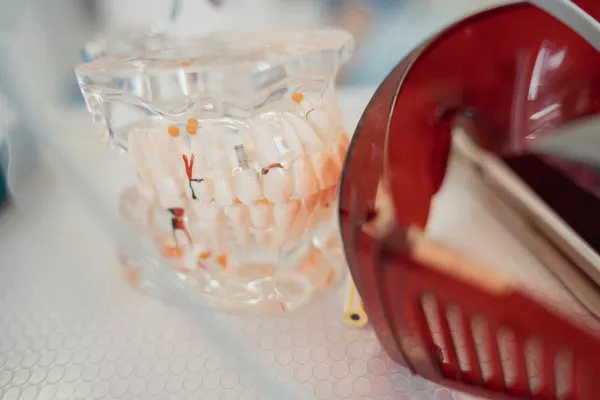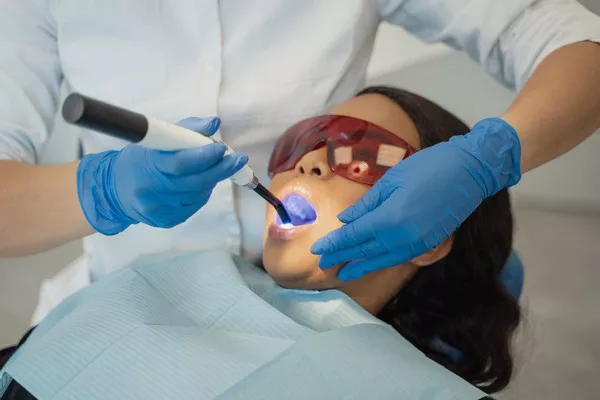Teeth whitening strips have gained popularity as an effective and convenient at-home solution for brightening your smile. One common question many users have is how long they should leave teeth whitening strips on for optimal results. In this comprehensive guide, we will explore the recommended duration for wearing teeth whitening strips, factors that can influence treatment time, and key considerations for achieving a brighter smile while maintaining good oral health.
Understanding Teeth Whitening Strips
Teeth whitening strips are thin, flexible plastic strips coated with a gel containing bleaching agents such as hydrogen peroxide or carbamide peroxide. The active ingredients in these gels penetrate the enamel of the teeth, breaking down stains and discoloration to reveal a whiter smile.
How Long Should You Leave Teeth Whitening Strips On?
Consult the Instructions:
It is essential to carefully read and follow the instructions provided with your specific brand of teeth whitening strips. Different brands may have varying recommendations regarding treatment time.
Standard Treatment Duration:
In general, most teeth whitening strips require wearing them for around 30 minutes per session. However, some strips may need to be worn for shorter periods, such as 15-20 minutes, while others may recommend longer durations, up to 60 minutes.
Factors Influencing Treatment Time:
a. Bleaching Concentration: The concentration of the bleaching agent in the whitening gel can impact the treatment time. Higher concentrations might require shorter durations to achieve the desired results.
b. Stain Severity: The extent of staining or discoloration on the teeth can also influence the treatment time. More severe stains may require longer treatment periods or multiple sessions.
Gradual vs. Immediate Results:
Teeth whitening strips typically provide gradual results over several days or weeks of consistent use. If you prefer more immediate results, some brands offer strips designed for shorter treatment periods but with higher concentrations of the bleaching agent.
Adhering to Treatment Schedule:
Consistency is key when using teeth whitening strips. Follow the recommended treatment schedule provided by the manufacturer, whether it is daily or every few days, to achieve the best results.
Avoid Overuse:
While it may be tempting to leave teeth whitening strips on for longer than recommended, doing so can increase the risk of tooth sensitivity and gum irritation. It is important to adhere to the specified treatment time and not exceed it.
Duration for Sensitive Teeth:
If you have sensitive teeth, consider using teeth whitening strips specifically designed for sensitive teeth, which often require shorter treatment times. Consult with your dentist if you experience prolonged sensitivity.
Maintaining Good Oral Health During Treatment
While using teeth whitening strips, it is crucial to maintain good oral hygiene practices. Here are some key considerations to keep in mind:
Brushing and Flossing:
Before applying teeth whitening strips, brush and floss your teeth thoroughly to ensure a clean surface for optimal contact with the gel. After removing the strips, gently brush your teeth again to remove any residual gel.
Avoid Staining Foods and Beverages:
During the teeth whitening process, it is advisable to avoid consuming deeply colored foods and beverages that could potentially stain the teeth, such as coffee, tea, red wine, and tobacco products. This helps maximize the effectiveness of the whitening treatment.
Sensitivity Management:
If you experience tooth sensitivity during or after using teeth whitening strips, consider using a desensitizing toothpaste or consult your dentist for recommendations on managing sensitivity.
Regular Dental Check-ups:
Maintain regular dental check-ups to ensure your oral health is in good condition and to address any concerns or questions you may have regarding your teeth whitening treatment.
Can you swallow saliva while using whitening strips?
When using whitening strips, it is generally recommended to minimize swallowing excessive saliva during the treatment period. Swallowing saliva is not harmful, but it’s ideal to avoid excessive swallowing to prevent dilution of the whitening gel and to ensure optimal contact between the gel and the surface of your teeth.
Here are a few tips to help manage saliva while using whitening strips:
Swallow Minimally: Try to be conscious of excessive swallowing during the treatment period. Allow saliva to accumulate in your mouth without actively swallowing it whenever possible.
Use a Towel or Tissue: You can discreetly place a folded towel or tissue under your tongue to absorb excess saliva. This can help reduce the need for frequent swallowing and minimize dilution of the gel.
Spit If Necessary: If you find it difficult to manage saliva buildup, you can cautiously spit out excess saliva as needed. Ensure that you do so gently to avoid accidentally removing the whitening strips.
Remember to carefully follow the instructions provided with your specific brand of whitening strips. Some brands may have additional guidance on managing saliva during the treatment period.
If you have concerns or questions about saliva management or any aspect of using whitening strips, it is always advisable to consult with your dentist or refer to the instructions provided with your product for personalized advice.
Conclusion
Achieving a brighter smile with teeth whitening strips requires understanding the recommended duration for wearing them. Most teeth whitening strips suggest a treatment time of around 30 minutes per session, although this may vary depending on the brand and concentration of the bleaching agent. It is crucial to follow the instructions provided with the specific product you choose.
Remember to maintain good oral hygiene practices, avoid staining substances, and address tooth sensitivity if experienced during the treatment process. If you have concerns or questions about using teeth whitening strips, consult with your dentist for personalized guidance based on your oral health needs.
Related Topics:



























